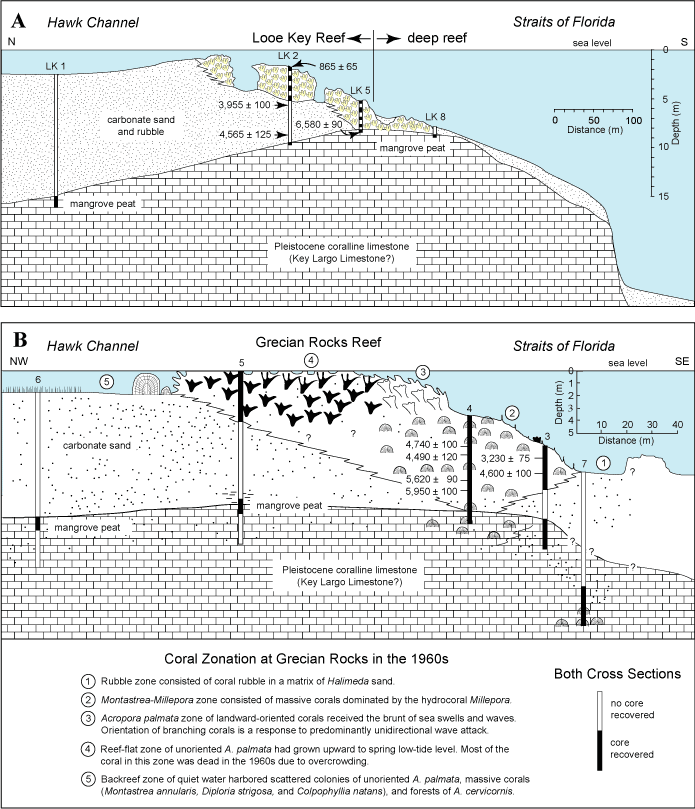FISC - St. Petersburg
Figure 92. Cross sections of Looe Key Reef (lower Keys) and Grecian Rocks (upper Keys) show reef components and uncorrected radiocarbon ages of corals recovered in cores at those sites. (A) Holocene coral growth at Looe Key Reef began on a bedrock-limestone ridge, possibly an outlier reef, and backstepped over a bedrock depression filled with carbonate sand and rubble (modified from Lidz et al., 1985). Note natural gaps or divides between coral reef sections. Looe Key cores are designated LK with a number. (B) Holocene coral zonation at Grecian Rocks in the 1960s showed five distinct zones (Shinn, 1963; modified from Shinn, 1980a), indicated by the circled numbers. Field observations in 2002 revealed that most of the corals including hydrocorals were dead. Conventional radiocarbon ages of 6580±90 yr B.P. at base of Looe Key core LK5 and 5950±100 yr B.P. in Grecian Rocks core 4 indicate coral growth began sooner in the lower than upper Keys. The ages shown are uncorrected for variations in 14C production. Two-sigma calibration ranges are given in Table 4. Note depths and locations of mangrove peat in both figures. Peat forms at very low-wave-energy shorelines. The deepest peat found so far on the reef tract was recovered in core LK1.
|
Can't see the printable PDF version? Get the free Adobe Acrobat® Reader. |
